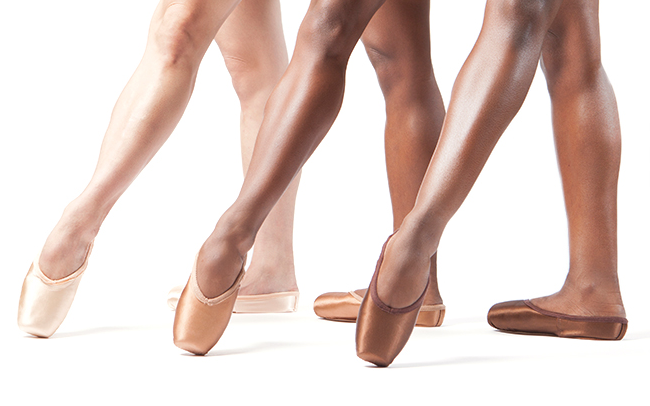Ballet dancers of colour have been painting, dying or covering their pointe shoes in makeup to match their skin for as long as they can remember. Could this barrier to inclusion in the dance world finally be breaking down?
Pointe shoes are essential for ballet dancers and they have been around since the 19th century, helping dancers to perform ‘on pointe’. However, these were targeted towards people with white skin and produced in nude colours only.
Pointe ballet shoes have finally been released in Asian and black skin tones for the first time in the UK by Freed of London, who have been producing pointe shoes since 1929. They are now, after 89 years, selling two new pointe shoes: one brown, the other bronze. Freed is the first firm in the UK to make pointe shoes for dancers of colour, but they have been in America for more than a year, created by company Gaynor Minden. The new shoes from Freed, a huge supplier in the ballet world, has helped to highlight the difficulties of inclusion for dancers of colour and the rituals they have had to perform before being able to dance.
For dancers of colour, practising ballet used to mean having to carry out a process called ‘pancaking’, as shoes were only available in nude, cream or pale pink. This involves using makeup to cover the shoes in order to match their skin tone – so they didn’t stand out from other dancers. Ciara Robinson, a senior artist at Ballet Black, a British dance company, has for nearly her whole career, carried out this ritual. She first did so when she was 15 at a summer dance school with Dance Theatre of Harlem. The company stated that her shoes needed to be brown, not the traditional pink and as they were not available in stores, she spray-painted them, “It made them crunchy” she said in a recent interview. When Ms Robinson joined Dance Theatre a few years later, she started to use makeup instead to cover her shoes and went through five tubes a week, covering 12 to 15 pairs of shoes. It took 45 minutes to an hour to cover a pair, because she wanted to make sure she covered them properly – a time consuming process that most dancers don’t have to go through. However, she states she “didn’t know any different”, it had always been something that dancers of colour had to do in order to practise ballet.
This long-awaited release of pointe shoes in more diverse colours, is also a reminder that dancers of colour are still a rarity in the ballet world. They remain barely represented, even at the top of their field, despite some slow signs of change and an increased awareness for the diversity needed at the schools feeding the professional companies.
Amy Kate Daniels
Image: Freed of London

